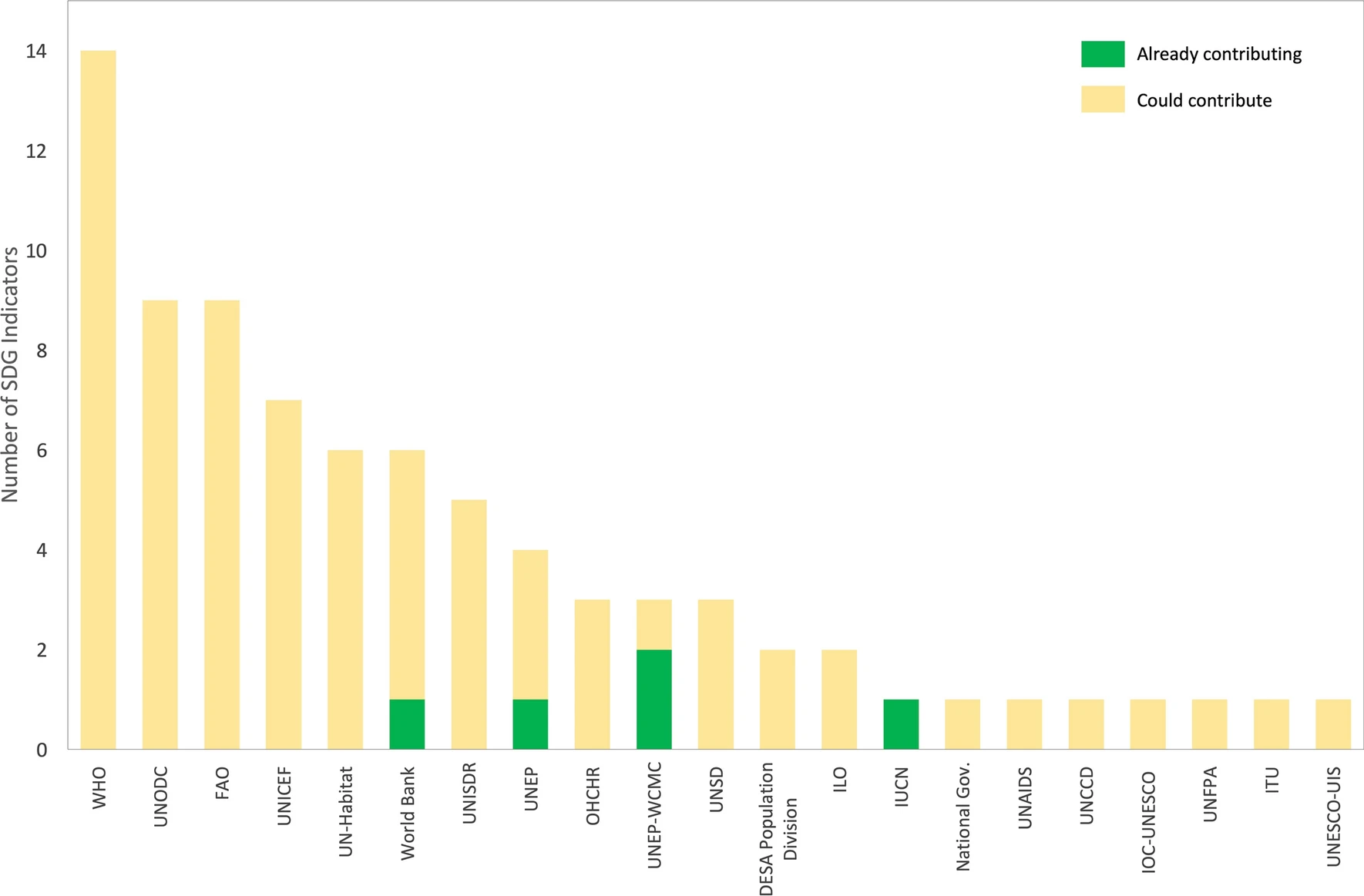
Closing the gap: Citizen science for monitoring sustainable development
Francisco Sanz
July 10, 2020, 8:22 a.m.
Closing the gap: Citizen science for monitoring
sustainable development
Citizen science could help track progress
towards all 17 UN Sustainable Development Goals (SDGs). An IIASA-led study, for
the first time, comprehensively analyzed the current and potential contribution
of citizen science data to monitor the SDGs at the indicator level.
Huge amounts of
accurate, timely, and comprehensive data are required to track progress towards
the SDGs. The 17 goals set by the UN in 2015 currently include 169 targets and
231 unique indicators that are defined in an evolving framework. However, many
of these indicators lack sufficient data to regularly track progress. Citizen
science can help to close this data gap. According to new research published in
Sustainability Science, citizen
science has the potential to provide data to track one third of all SDG
indicators. The study included a systematic review of all SDG indicators and
mapped past and ongoing citizen science initiatives that could directly or
indirectly provide data for SDG monitoring.
Most citizen science
initiatives engage members of the public to contribute observations of nature
at global, regional, national or local levels, so unsurprisingly, the greatest
potential for input was shown to be for the environmental SDG indicators. This
is particularly encouraging as, according to the United Nations Environment
Programme (UNEP), 68% of environment-related indicators lack data.
“Without new ways of
monitoring, such as citizen science, we will never be able to achieve global
monitoring of the SDG framework, as traditional means of data collection are
too expensive to cover all 231 indicators on a regular, geospatially
representative basis,” explains UNEP Statistician, Jillian Campbell.
Indicators that were
shown to align well with citizen science approaches included those that could
be supported by spatial data, such as monitoring of water or air quality,
disease threats, post disaster damage assessment, and open spaces in cities.
“The most remarkable
finding from this review process is that citizen science has the potential to
contribute to all 17 SDGs, since it is already directly or indirectly contributing, or could
contribute to at least one indicator per goal. For example, indicators that
could be supported by self-reporting such as sexual violence or perceptions of
safety, align well with data already being collected by some citizen science
initiatives. These findings are generating interest and our results have been
presented to the Inter-agency and Expert Group on SDG Indicators that is
responsible for developing and implementing the global indicator framework for
the SDGs and targets,” says IIASA researcher and study lead author, Dilek
Fraisl.
The researchers demonstrate
that while citizen science data cannot replace, nor compensate for all the limitations
of traditional data sources, there is great potential for new data sources to
complement the traditional sources, such as the census, household surveys, and
administrative records that are currently used to monitor progress on the SDGs.
In many cases, citizen science initiatives are already established and only require
varying degrees of modification, opening out, and collaboration to bring their
approaches and tools to the table.
Examples from the
study of how citizen science could contribute to SDG monitoring are the Picture
Pile tool developed at IIASA and the Humanitarian
OpenStreetMap for the SDG indicator on “direct economic loss attributed to a
disaster”. Picture Pile requires volunteers to classify satellite images to
identify damaged buildings after a disaster. It is designed as a flexible tool
that can also be used for monitoring SDG indicators related to poverty, food
security, ecosystem health, and deforestation, among others. In the Humanitarian
OpenStreetMap application, participants digitize the areas affected by
disasters, which includes identifying damaged roads for disaster responders to
reach those in need. Researchers can then apply maximum damage functions to the
mapped areas to calculate some of the direct economic losses due to a disaster.
The study also showed
that citizen science was introduced successfully as part of the reporting and
monitoring process for the indicator on marine litter that initially had no
established methodology and standards available to support it. The methodology
of this indicator currently suggests citizen science as a primary source of
data for monitoring marine litter.
The researchers highlight that realizing the full potential of citizen science will require demonstrating its value in the global data ecosystem, building partnerships around citizen science data to accelerate SDG progress, and encouraging investment to enhance its use and impact.
This research was
completed through a global citizen science community of practice led by IIASA
in collaboration with the United Nations Environment Programme (UNEP), with
funding from the European Commission, and intellectual support from the
Thematic Research Network on Data and Statistics (TReNDS) of the Sustainable
Development Solutions Network.
Reference
Dilek Fraisl, Jillian Campbell, Linda
See, Uta Wehn, Jessica Wardlaw, Margaret Gold, Inian Moorthy, Rosa Arias, Jaume
Piera, Jessica L. Oliver, Joan Masó, Marianne Penker, Steffen Fritz (2020)
Mapping citizen science contributions to the UN Sustainable Development Goals. Sustainability Science. DOI: 10.1007/s11625-020-00833-7
Contacts:
Researcher contact
Dilek Fraisl
Research Scholar
Center for Earth
Observation and Citizen Science (EOCS)
Ecosystems Services
and Management
Tel: +43 2236 807 398
fraisl@iiasa.ac.at
Communications Officer
Rachel
Potter
IIASA Press Office
Tel: +43 2236 807 574
Mob: +43 676 83 807 57
potter@iiasa.ac.at
About IIASA:
The International Institute for Applied Systems Analysis (IIASA) is an international scientific institute that conducts research into the critical issues of global environmental, economic, technological, and social change that we face in the twenty-first century. Our findings provide valuable options to policymakers to shape the future of our changing world. IIASA is independent and funded by prestigious research funding agencies in Africa, the Americas, Asia, and Europe. www.iiasa.ac.at